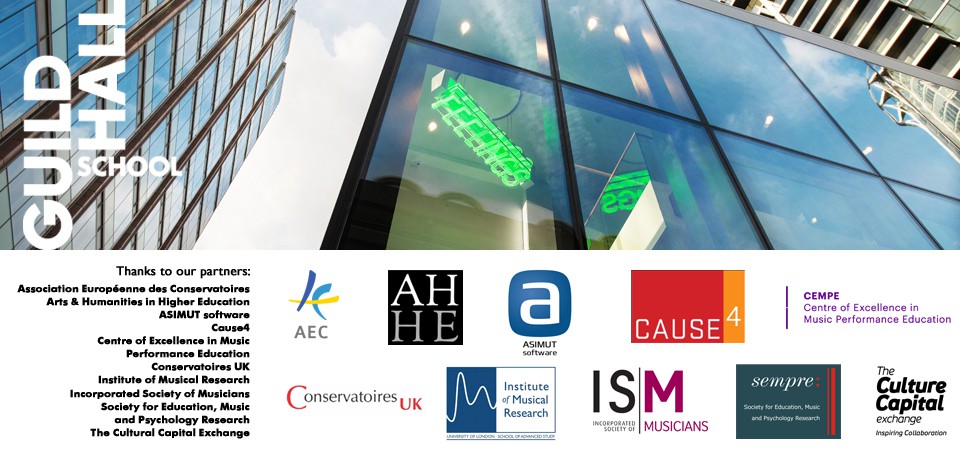Henk van der Meulen, Principal of the Royal Conservatoire in the Hague, calls for conservatoires to reassess the interconnections between art form, individual practitioner and the context in which they make their work, these being essential to the DNA of contemporary conservatoire practice. Please add your comments in the “Leave a Reply” box below.
IT’S THE MUSIC
When I took on the position of Principal at the Royal Conservatoire in The Hague six and a half years ago I was faced with the mostly unaddressed and largely unarticulated schism between two groups of teachers. A small group was involved in educational reform, active in conferences and seminars that were re-addressing the one-on-one teacher-student relationship and practices. They wished to develop curriculum innovations, for example: team teaching, peer learning, artistic research, entrepreneurship, project based modules and new forms of assessment. The majority of the teaching staff were less concerned with such developments, some taking the view that top quality one-on-one teaching was all that was needed to prepare a student for a professional and successful career.
The practice of western classical music is particularly challenged in today’s commercial and digital environment. Some of the teachers understandably did not want to recognise this and saw themselves as custodians of a much-cherished musical practice which in fact no longer existed.
One of the strategies of the reformers was to soldier on with discussions and push for curriculum changes to supplement the dated teaching practices of some of their colleagues. Compulsory additions such as: an educational module, reflection and research and entrepreneurship were added, as well as a larger range of subjects in the form of electives, minors and special projects.
Consequently, on paper most aspects of musical and professional development were now being offered to the students. Unfortunately many individual teachers remained unaware of the other parts of the curriculum, outside the subject of their own expertise. The importance and experience of this more rounded approach to education was all too often left for the individual student to navigate without the guidance and connecting insight from their professors.
Both groups of teachers could be questioned. The reformists could get over zealous with their use of economic, marketing and consultancy jargon. In the process of the much-desired innovation sometimes the properties specific to music and music making fell away. The conservationists could be seen as imposing their singular perspective and interpretation of music and musical practice onto their students to the exclusion of any other influences. However, both camps often overlook the essential element in the equation, which is the art of music itself.
In my view the DNA of a conservatoire and musical practice in general, consists of the following elements:
The art form of music
- The individual musician, be it student or teacher
- The context in which 1. and 2. operate
These three elements should consistently interact whether in an individual class, rehearsal, lecture, project or performance. It is the connectedness of these three elements, which should be the leading principle of all we do at a conservatoire. In other words our approach should be holistic and symbiotic. Interestingly the first crucial element music, with its own intrinsic features informs not only the other two elements but it will also shed light on many aspects of ones whole life. The countless layers of musical phenomena such as composition, structure, development, change, interpretation, expression, phrasing, dynamics, breath… reflect our very existence. Musical practise cannot exist without knowledge, craft, talent and personal engagement of the musician(s). It is an art form dependent on human skill and execution. At the same time the act of making music always takes place and is influenced by the context, be it a physical space, a live audience or within the virtual reality of digital media. The quality of a conservatoire will depend on the quality of and the connections between these three elements.
A holistic approach should not only insure that we are always aware of these three core elements, but should also allow and encourage them to interact freely. This calls for a curriculum that has a well constructed but flexible framework, bridging and connecting elements, functions and roles. This means that theory and practice can amalgamate, functions such as teaching and learning, become a two-way exchange, performing and witnessing a performance become a collaboration. Then a conservatoire is not just a school but also a research laboratory and a cultural institution offering performance and other opportunities to teachers, students, alumni and amateurs. This should happen in and outside the physical building of the school thus integrating into society and contributing to the discourses within.
This approach calls for a suitably sized and carefully staffed organisation. In a relatively small conservatoire it will be easier to establish the sense of community needed to continuously (re-) create the interaction between the three core elements. The main body of teaching staff should be employed for two to three full days a week to insure continuous participation and exchange. The curriculum and the assessment procedures should be supple, clear and ever evolving; embracing the unexpected of every creative process within the institution.
But most importantly, everything should be derived from the essential element within all this, the music itself.
Henk van der Meulen
Principal Royal Conservatoire, The Hague, The Netherlands
